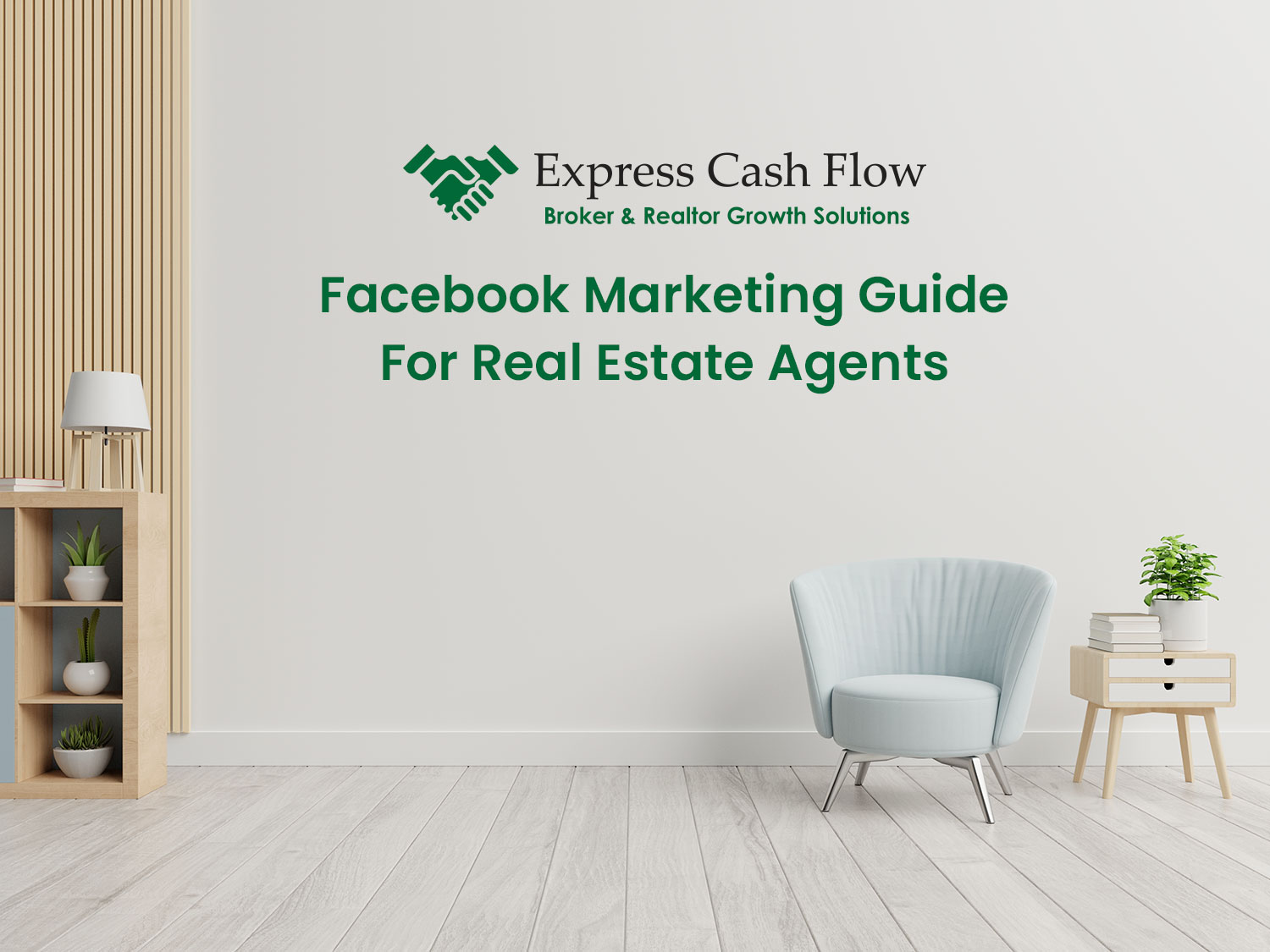For many real estate agents, creating real estate FB/IG ads and generate leads for a reasonable price seems to be a distance dream. Many tried out for a few months then didn’t get the results they want and promptly quit. It’s quite unfortunate but many seems to jump in too fast and never took the time to learn the basics. That’s why we created this guide for real estate agents as a starting point to get you understand how can Facebook help your real estate business.
- How can Facebook help your business?
- Current State of Facebook
- Facebook and Marketing
- How does it work for Real Estate Agents?
- How to do it from scratch
- Create a Facebook personal page
- Create Facebook Business Manager Account
- Create Facebook Business Page
- Create Facebook Ad Manager
- Create and Install Facebook Pixel
- Create your ads
- Test – test – test
- Closing Thoughts
A – What is Facebook Marketing and how can Facebook help Real Estate Agents?
One may say: “I’ve heard FB ads needs lots of money and only work with big companies!?”
It’s true that multibillion-dollar companies set aside enormous budget to advertise on Facebook, but you don’t need to do the same to be successful.
Fear not. There are strategies to make it work for small businesses, especially real estate agents. There is so much you can do on Facebook to help grow your real estate business to the next level. In this mini course, you will learn the most important framework to get started with your Facebook advertising and start generating leads effectively.
A-1 Current State of Facebook
Before we dive headfirst to the unknown water, let’s learn a few things about Facebook and Marketing. (You heard it right, 2 things: Facebook platform and Marketing)
According to Facebook Data report in 2018, more than 2 Billion people around the world are using Facebook every day and 223 Million of them are active users in the United States1 . Latest statistics from eMarketer shows that people in the US spend an average of 37 mins on Facebook and an additional extra 29 mins on Instagram2.
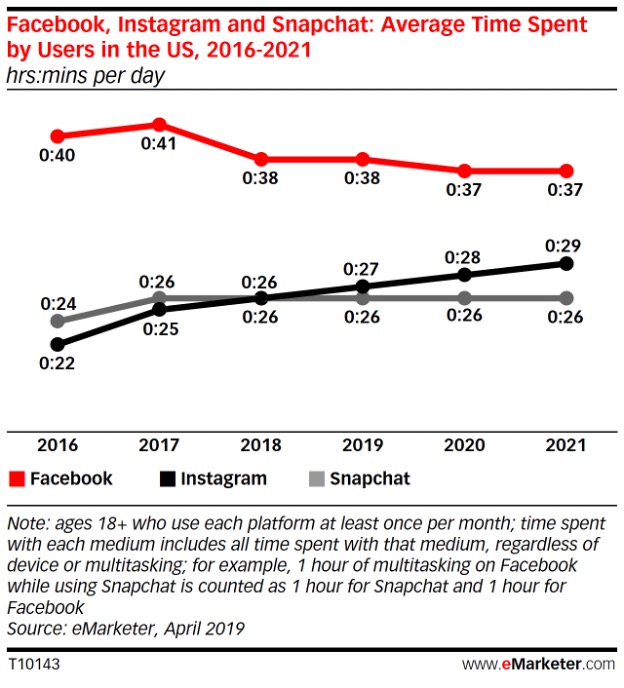
Facebook is truly everywhere. It not only connects people together but also connect people with their favorite businesses and organizations. Because FB have such a wide reach, Realtors can leverage the platform to get in touch with existing and new clients easily.
A-2 Real Estate Agent: Facebook / Instagram and Marketing
Facebook does not and will not replace your traditional marketing efforts. However, it’s a perfect addition to your existing marketing strategies.
You must have heard about the principles of marketing: the 4 Ps (Products, Price, Place, Promotion), and its modern sibling the 4+1Ps (Products, Price, Place, Promotion, and People).
I assume you already know everything about those basic principle. If not, I highly recommend that you spend some time go back to the basic to learn the traditional marketing methods because all principles apply to online marketing.
So, which P do you think Facebook Ads fall into?
It’s a bit easy, isn’t it? If you answer is Promotion. Congratulation. You’ve joined 90% of people who have missed the 5th P – People – YOU. People here refer to the real estate agents, broker, their staffs or anyone who work for the business. It’s basically how you want you yourself to be perceived by your prospects & clients.
How does that translate into the real-world scenario to promote your listing and yourself? Let’s go over some examples for real estate agents:
One – John is a seller agent and you have a property to sell in Newport Beach, California. What would he do?
- He does all the rituals for the MLS listing, do a little Zillow lead thingy, spend couple thousands dollar buying leads.
- He hires a designer to create a website for the property because MLS listing sucks anyway (low resolution pictures, horrible layout, …)
- He sends out flyers, brochures with killer photography to prospects, inviting them to check out the property on the newly created website.
- He sends out emails to prospects
- He holds open houses regularly
- Sponsor local events to promote the house,
- etc. etc. (all the things that top producers usually do)
What if he can do even more using Facebook ads?
- Using Facebook Pixel, a tiny code embedded on the website, he can track how many people have visited the site and serve ads to those who spend time checking out the photos and the 3D tour.
- He can track and serve ads to people who walk into the open house using geo-location fencing technique.
- He can serve ads to specific leads in list he purchased by uploading the list to Facebook.
- He can generate the leads himself by running ads instead of buying leads from Zillow and others.
Two – Jenna is a new agent, and she wants to farm Huntington Beach, California.
- She walks around the neighborhood to greet homeowners as they do their exercise routine.
- She does door knocking and leave informational door hangers
- She sends out mail and postcards with useful information
- She asked to host open houses for other agents who’re too busy to do so she gets to know more about the area. (yes, she saturated the area with her signs instead of the listing agent and the neighbor knows her name)
- She builds the connections within the community
- She hosts local events
- She builds her own website and starts to blog about the best places to visit in the farming area
- She collects email and send out newsletter to collect leads.
What can Jenna do more by running ads on Facebook?
- Drive more traffic to her blog and websites.
- Promote her local events
- Install Google Analytics and Facebook Pixels to track people behaviors on her website then serve ads accordingly
- Setup campaign to send out ads to download the latest local guide to specific zip codes.
In those 2 examples, we can see one thing in common: successful agents rely on multiple channels to deliver their messages and Facebook is just one of them. The platform helps you expand your reach and target only the area that you want.
There are endless possibilities for you to do online marketing in general and FB ads to be specific. The limit is your own creativity. The cost, depending on how big of your area, can be easily justified by the results.
B – How to do Real Estate Agent Facebook ads from scratch
Before you can run ads, you will need to complete several tasks in the following order:
- Create a Facebook personal page
- Create Facebook Business Manager Account
- Create Facebook Business Page
- Create Facebook Ad Manager
- Create and Install Facebook Pixel
- Create your ads
- Test – test – test
B-1 Create Facebook personal page if you don’t have it.
To do advertising on Facebook, you must have a Facebook account; there’s no way getting around that. There are 2 types of Facebook page: personal page and business page. Personal page is used for anything personal, in this page you represent your true self and you’re just like billions of other people: consumer of FB content. Business page, on the other hand, is quite different. It helps people connect to your business and find out more about you as a realtor.
A Business Page is controlled by a personal page or a Business Manager Account. If you don’t have a Facebook personal account for some reasons, please head onto Facebook.com and create one. You can fill in fake personal information (like birthdate and such) if you so ever afraid that FB will steal all of your info. This is your personal Facebook page, so do whatever you think is appropriate with it.
B-2 Setting up Business Manager Account
The next step is to create a Business Manager Account. Through this platform, you can access your business page, Ads manager, and grant access to different people to manage the account. Setting this up is an easy task:
- Go to: business.facebook.com
- Click on “Create Account” on the top right-hand corner.
- If you’re already signed in on Facebook, it will ask you to enter the name of the business, your name, and email address. The process is very straightforward, so you should not have any issue at all.
B-3 Create your Facebook Business Page:
Inside your Business Manager Account, locate the Navigation bar on the left Column.
Click on the Accounts section to expand it
Click on Pages and select Add.
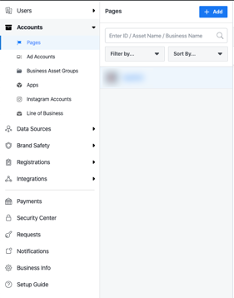
You then select “Business or Brand” option:
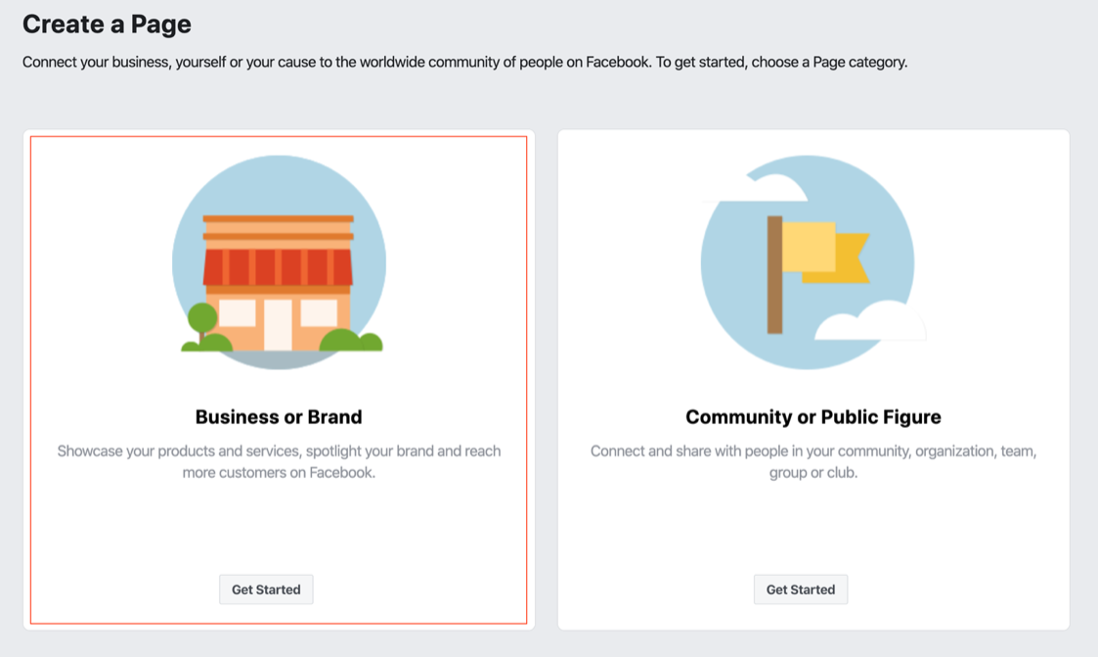
Give your page a name and select Real Estate Agent as the Category, then fill in your business information. Leave the check box unchecked. You want people to know your office location, don’t you? Then hit continue.
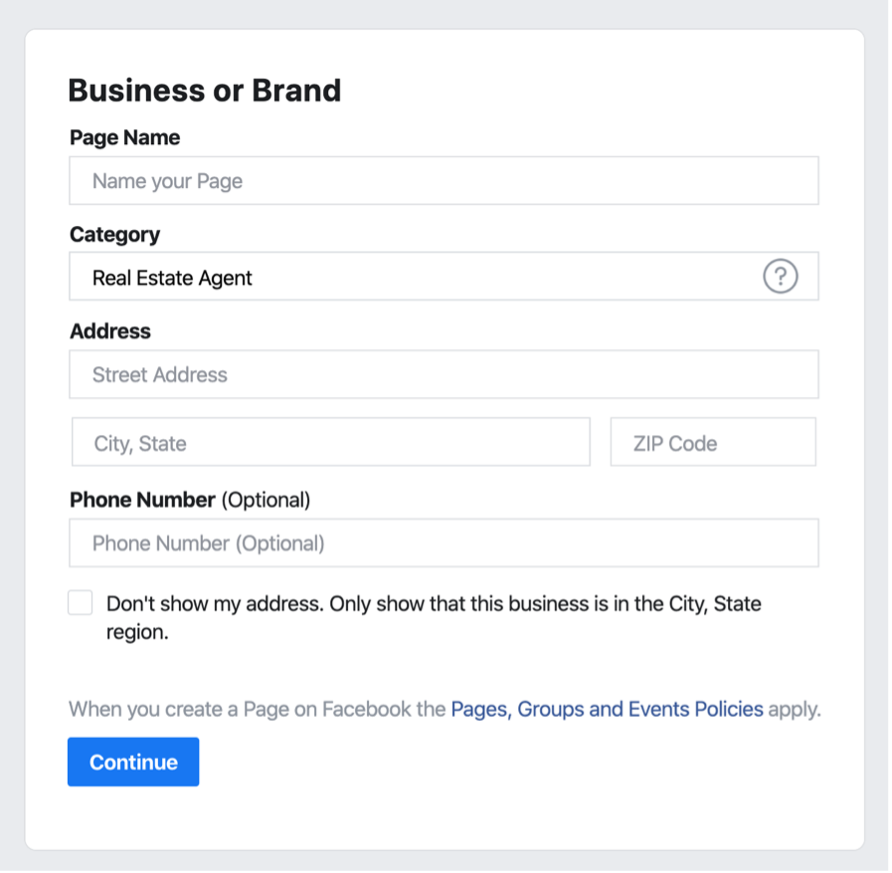
The next step requires you to upload your Profile Photo and a Cover Photo.
Then, you’ve created your Business Page. Just follow the prompt to fill in all necessary information. Congratulation, you’ve finished creating your Facebook Business Page.

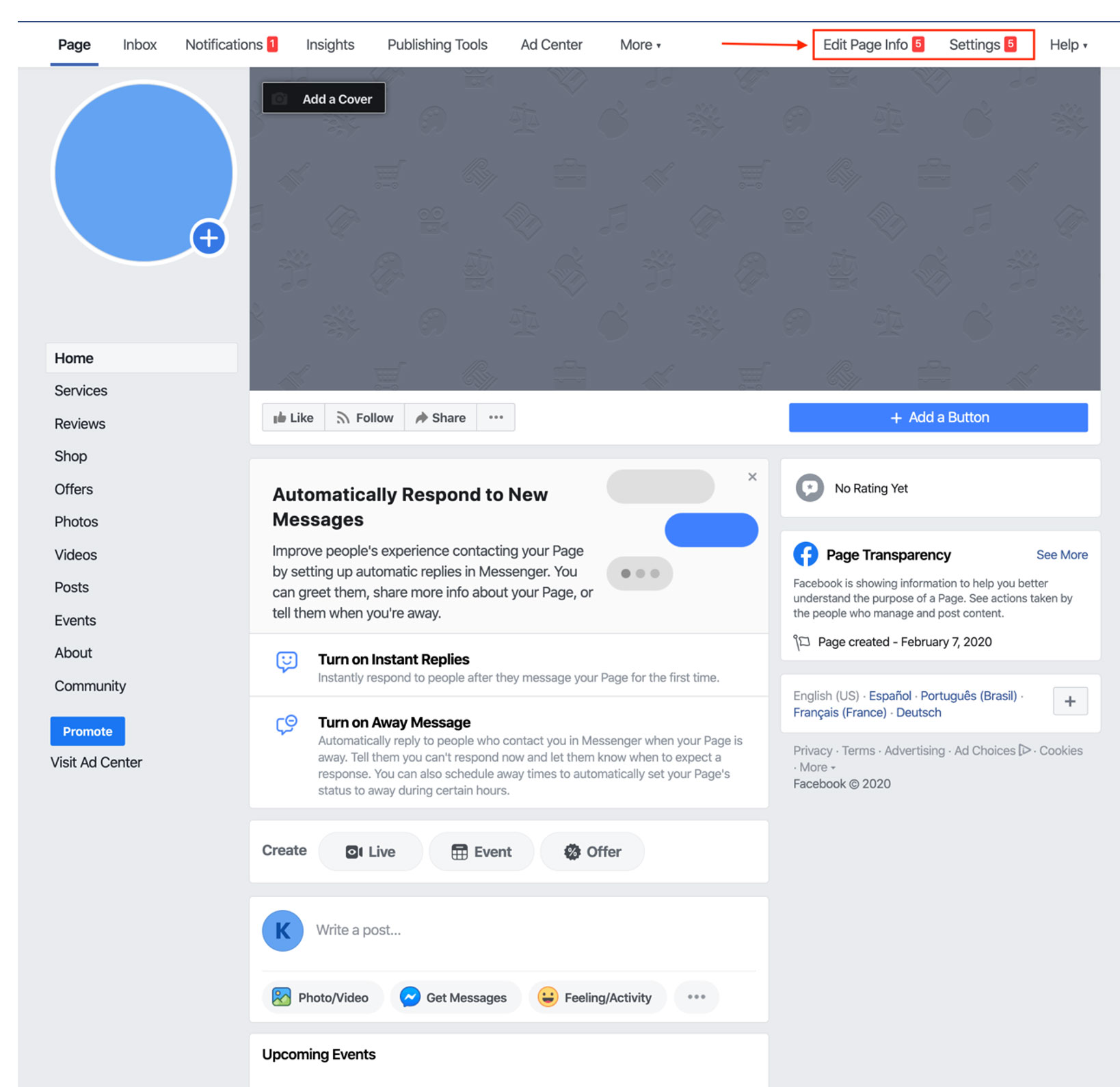
B-4 Setting up your Facebook Ad Manager:
This step will help you setup your ad account, if you already have one, please skip.
In your Facebook Business Manager settings, navigate to Accounts, then click on “Ad Accounts”, then Click Add to create a new one.
You just need to follow the on screen instruction, fill in all of the information and plugin a credit card. Then you’re ready to move on to the next step.
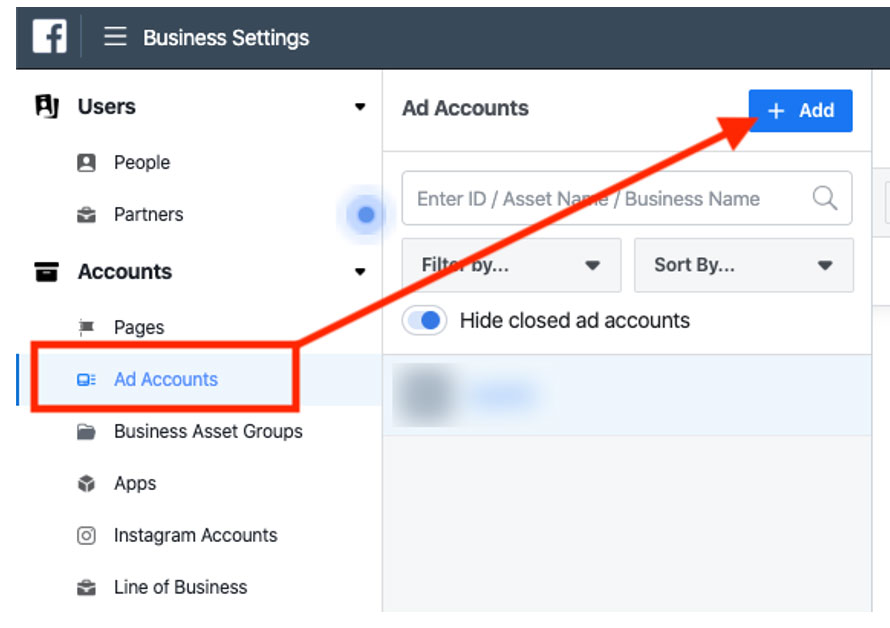
B-5 Setup your Facebook Pixels:
- To track the performance of your ad campaigns, you will need a little code snippet called Pixels.
In your Facebook Business Manager, click on Data Sources, then select Pixels. - Click Add to create new Pixel tracking
- After that, select Set up the Pixel Now
- We highly suggest you send the Pixel code instruction to your website developer to have it installed properly.
- Then, congratulations! You’re halfway through it and now ready to create your first ad.
![]()
B-6 Create your first Campaign and ads.
When you first create a campaign, you’re greeted with a series of Objectives in 3 primary groups:
- Awareness
- Consideration
- Conversion
This is the way Facebook guide you to create a lead funnel. First you let people know you and your brand, then influence their consideration, and finally convert them to ultimately complete the action you want them to.
So, if you’re a new agent, or have never ever set foot in your farm and want to start making some noises, you can start with Brand Awareness or Reach Objectives. This will train the campaign to reach as many people as possible within your targeted location and targeting criteria (more on this later).
In the Consideration group, you will have the following:
- Traffic: serve the ads to the people who are likely to visit your landing page (traffic to your landing page)
- Engagement: serve the ads to the people who are likely to engage with your ads.
- App installs: If you have an app and want to promote your app, this is the right option for you.
- Video Views: serve the ads to the people who are likely to watch your videos
- Lead Generation: serve the ads to the people who are likely to fill in your Facebook Lead Generation form.
- Messages: encourage people to send message in the ads by having a ‘Send message’ button in the post. This will connect them directly to your Facebook messenger to start a conversation. This option is powerful if utilized correctly because it opens a direct message channel to the audience.
In the Conversions group, there’s only one objective you should be focusing on: Conversions.
At this point, you may ask: ‘What is conversion in Facebook?’
It’s an action audience completed on your website / Facebook that you define. It can be anything from visiting your website, viewing a particular section of your page, click a button, or fill in a form. If the action take place outside of Facebook platform (for example: your website), the Facebook pixels you installed on your website will handle the tracking and record those actions.
Getting back to the Conversions Objection: This option allows Facebook to optimize the campaign to serve to those people who are likely to complete those actions before. That’s where the catch comes in. When you first launch your campaign, FB has no historical data on your pixels to know what types of people will likely to convert on your account. Therefore, it will start the campaign in other objectives mode and will likely serve to everyone within your pre-determined target audience. That’s not ideal because it will eat through your budget quickly without getting any results.
For example: If you set the conversion to fill in lead form on your website, and before that, you don’t have your pixels record who did that, then FB has no clue who it should serve the ads to. The AI needs to have some historical data to work its magic.
Warming up the Pixels:
As a result, the most common practice of Facebook advertisers is warming up the pixels, meaning giving Facebook historical data by running campaigns with easy to achieve conversions in the lower tier.
For example: create conversion actions for video views or website clicks instead of form filling.
When you have at least 50 conversions in the lower tier, that’s when you know your Facebook pixels is trained and ready for higher action.
The rationale for this type of action is: People who already watch your videos tour will likely engage more with you or have good impression with the property and the chance they contact you for a showing is higher.
That’s then you can create new custom audience in Facebook and target specifically those people only. The campaign will likely cost less and yield more results.
B-7 Test- Test and Keep testing:
You must be consistent and put everything to the test. One of my fellow marketers once said: “Wanna know the technical (and professional) term for when you hit your goals on the first try? Here it is: MIRACLE.” Marketing is half math and half psychology. You have to figure out what people want and then find a way to give it to them, at a profitable rate.
That’s why you should test multiple ads and hit the target audience at multiple angles.
If your listing has some unique selling points, use that to your advantage. Some people like pools, some like hilltop view, some prefer ocean views. Use those unique features and create video ads and serve to those audience. It sounds very simple, but many people tend to forget or find it too complicated to create custom videos like that.
One simple method used by many successful advertisers is the 3-8-8. That means you must create:
- 3 campaigns with 3 different objectives
- 8 adsets in each campaign. Each adset has different targeting options (to see which targeting option works best for you)
- 8 ads per adset.
If you do the math, the total number of ads can easily reach 192 if you want to test both Targeting and Ads variants. In many cases, this is simply too much to setup and require lots of budget to test. This works well in case you have a 30 million dollar listing but won’t work with small listings due to the number of investments involved.
Therefore, the best compromise is to start small with 1 campaign objective (traffic to your landing page), then 4 different ad sets and 4 ads in each adset.
After running the ads for 24-48 hours, you can clearly see which one perform better and pause the bad ones.
Closing Thoughts for Real Estate Agents:
Now that you have some ideas of how to run FB/IG ads. It’s time for you to dive in and create your first campaign. There’s nothing beneficial for you than to practice yourself and get familiar with one of the most potent tools in the marketing world. Learn how to do it is hard, but the reward is well worth the effort.
And if you fail the first time, try and learn again to improve because many successful agents are using FB / IG to crush the competition. If they can do it, we can do it.

